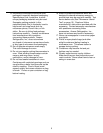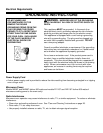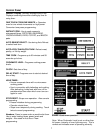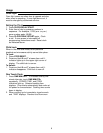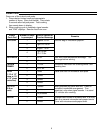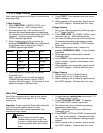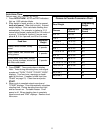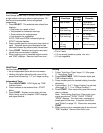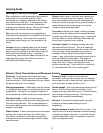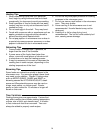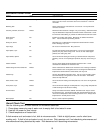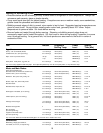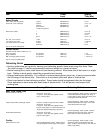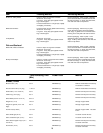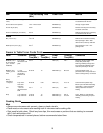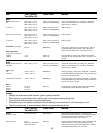
13
Cooking Guide
Microwave Cooking Techniques
Many microwave cooking techniques are similar to
those used in conventional cooking. Other
techniques are necessary because of the unique
way microwaves cook food. In microwaving, food
should be arranged and handled to allow even
exposure to microwave energy. Use the techniques
described here for best microwave results.
Stir foods such as casseroles and vegetables at
intervals during microwaving to distribute heat evenly
and speed cooking. Since food at the outside of
dish absorb more energy, stir from outside to the
center.
Arrange unevenly-shaped foods such as chicken
pieces or salmon steaks with the thicker, meatier
parts toward the outside of the dish where they will
receive more microwave energy. To prevent
overcooking, place delicate areas of foods such as
asparagus tips toward the inside of the dish to
receive less microwave energy.
Shield certain areas of food with small amounts of
aluminum foil to prevent overcooking. Areas that
may need shielding include quick-cooking parts of
food such as the wing tips and leg ends of poultry, or
areas that attract the most energy, such as the
corners of square baking dishes.
Turn over foods like pork chops or baking potatoes
midway during the cooking time to expose all sides
to equal amounts of microwave energy. Large foods
such as roasts or whole cauliflower should also be
turned over to promote even cooking.
Let foods "stand" to complete cooking after they
are removed from the oven. This is an important
microwave technique that allows the center of foods
such as cakes, whole vegetables and roasts to
complete cooking without overcooking the outer
areas. Large foods build up enough internal heat to
continue cooking as they stand. The length of
standing time depends on the density and surface
area of the food. Place cooked food on a flat
surface (counter top). Cover with foil or untensil lid
for recommended time in this cooking guide.
Effects of Food Characteristics on Microwave Cooking
Piece size. Small pieces cook faster than large
pieces. Pieces which are similar in size and shape
cook more evenly. With large pieces of food, reduce
the power setting for even cooking.
Starting temperature. Foods taken from the freezer
or refrigerator take longer to cook than foods at room
temperature. Timings in our recipes are based on
the temperatures at which foods are normally stored.
Quantity of food. In both conventional and
microwave cooking, small amounts usually take less
time than large amounts. This is most apparent in
microwave cooking where time is directly related to
number of servings.
Shape of food. In both conventional and microwave
cooking, thin areas cook faster then thick areas.
This can be controlled in microwaving by placing
thick pieces near the outside edge, and thin pieces
near the center.
Density of food. In both conventional and
microwave cooking, dense foods, such as a potato,
take longer to cook or heat than light, porous foods,
such as a piece of cake, bread or a roll.
Round shapes. Since microwaves penetrate food to
about 1-inch from top, bottom and sides, round
shapes and rings cook more evenly. Corners receive
more energy and may overcook. This may also
happen when cooking conventionally.
Delicacy. Foods with a delicate texture are best
cooked at a lower power settings to avoid
toughening.
Natural moisture of food affects how it cooks. Very
moist foods cook evenly because microwave energy
is attracted to water molecules. Foods with uneven
moisture should be covered or allowed to stand so
heat can disperse evenly.



